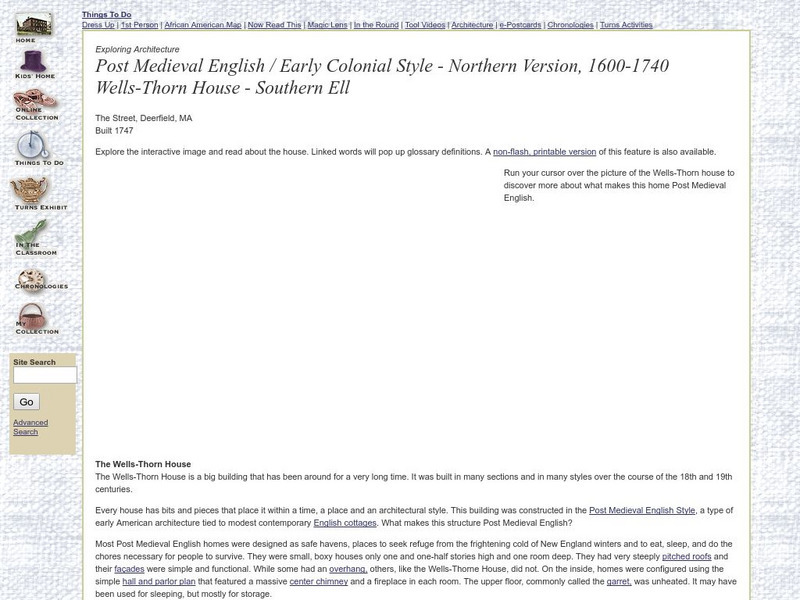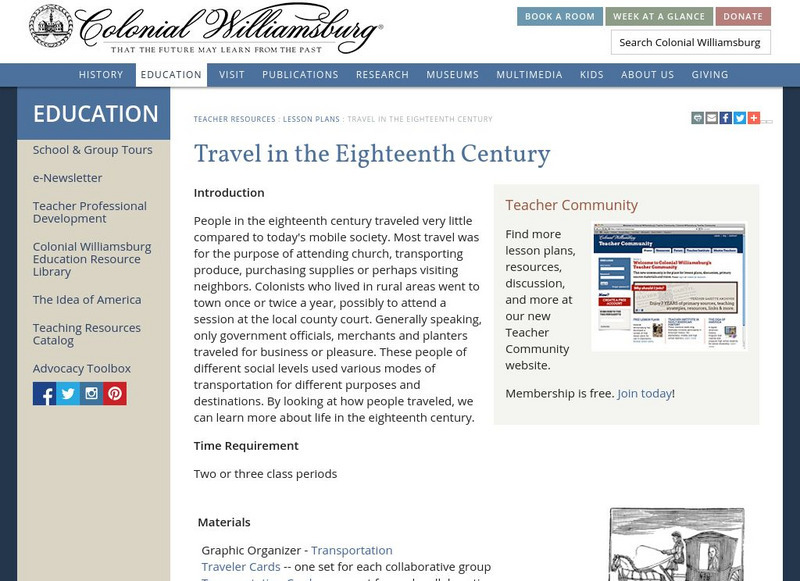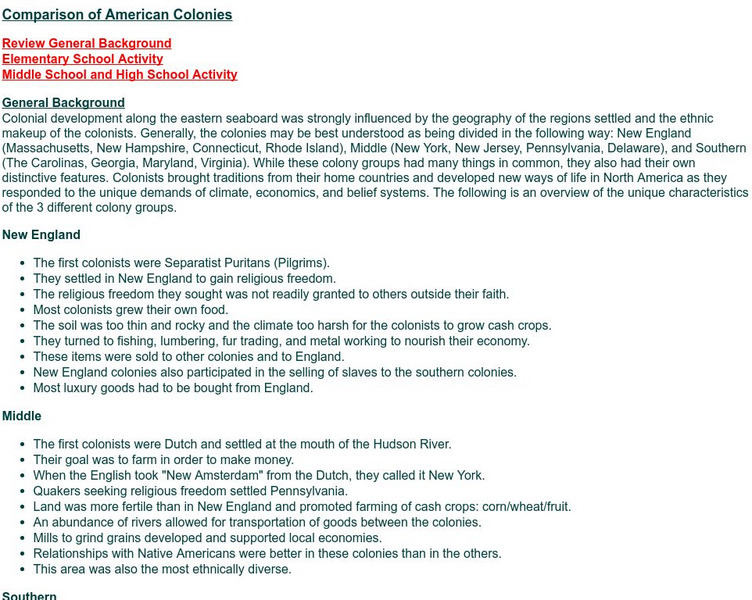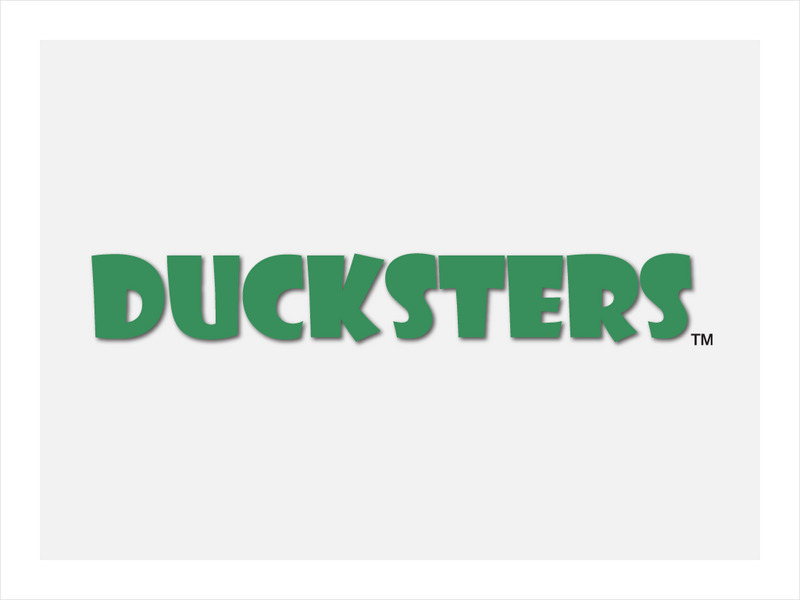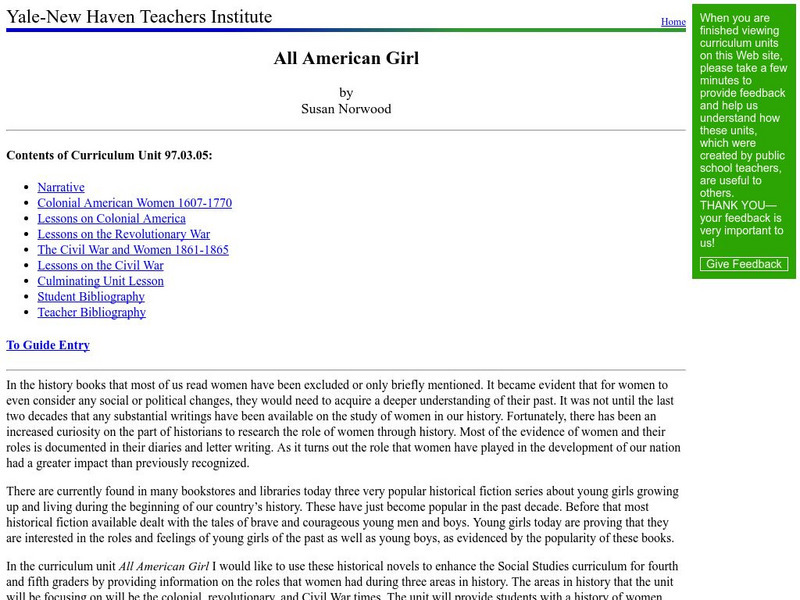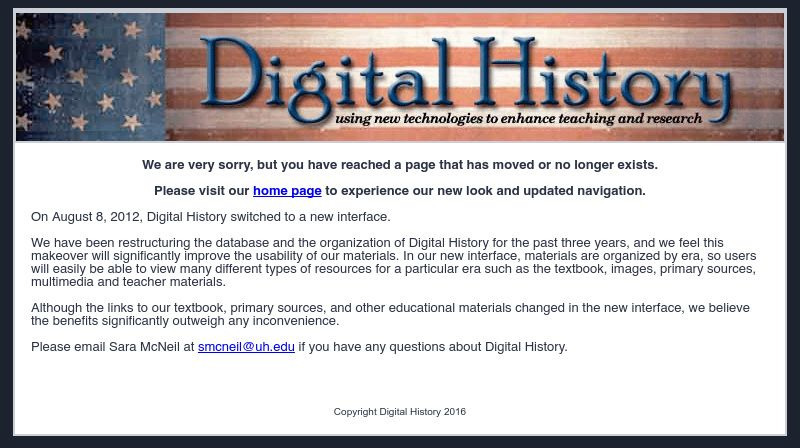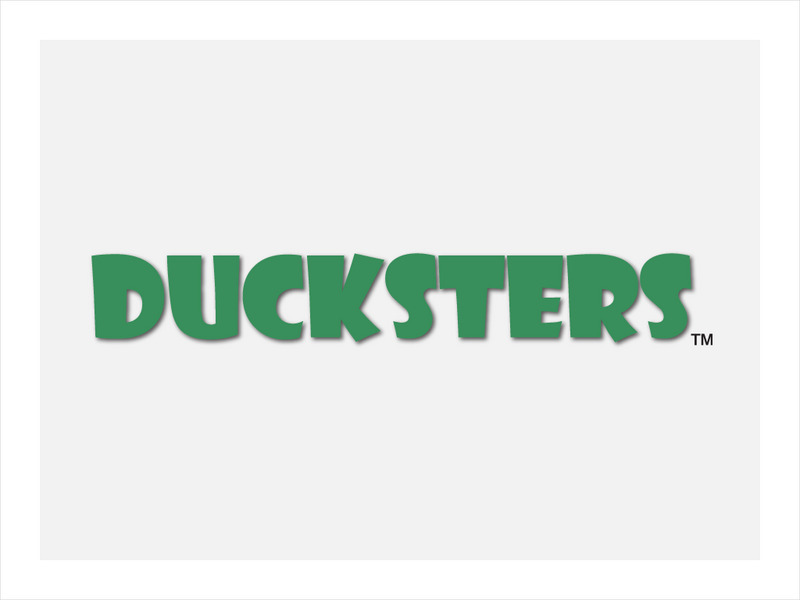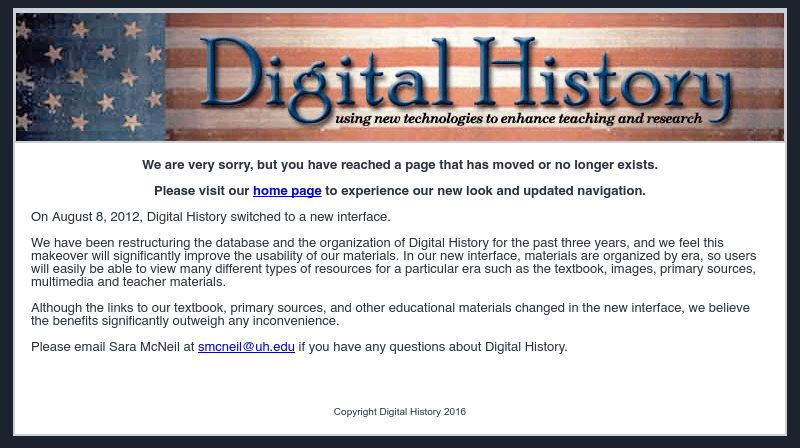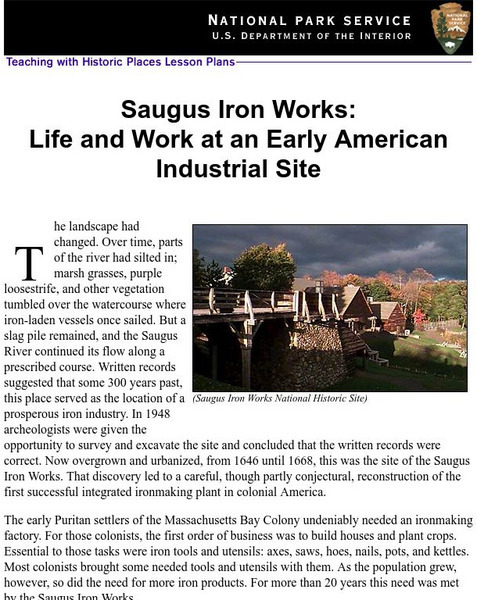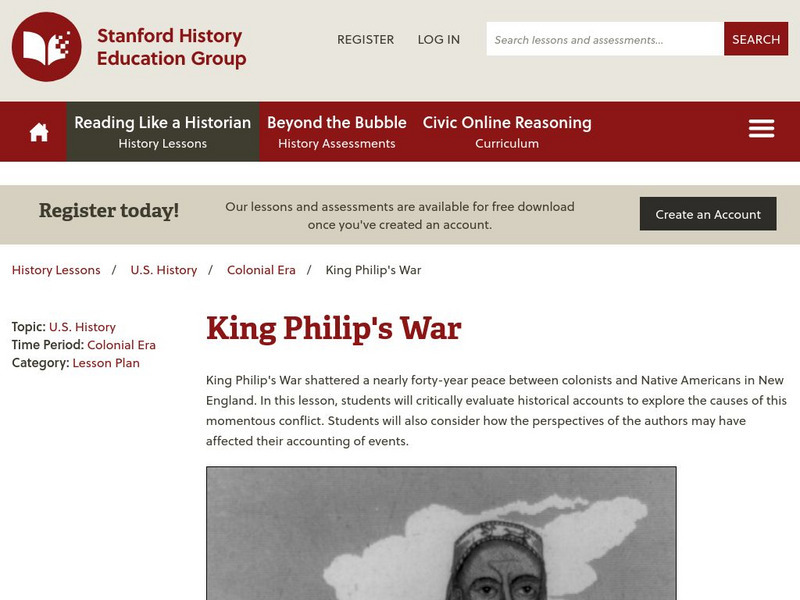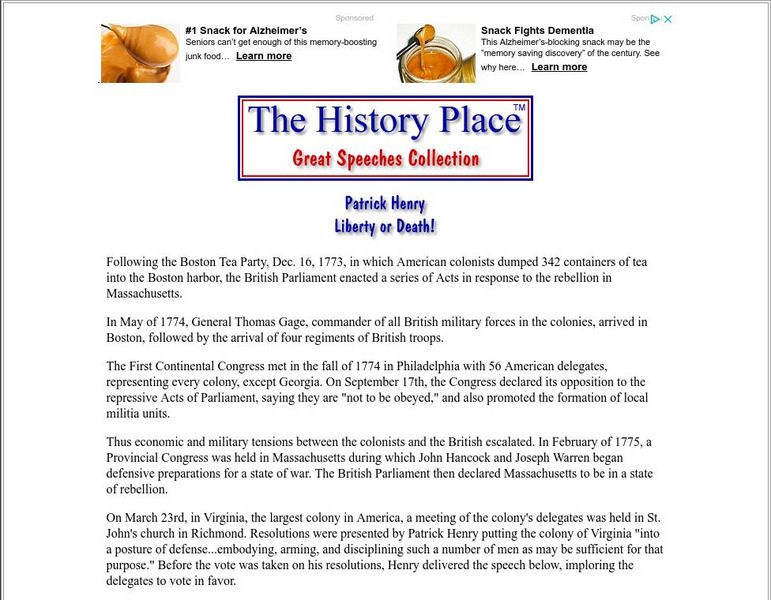iCivics
I Civics: Colonial Influences
Where did the American colonists get their ideas that lead to a revolution and a whole new kind of government? This lesson explores the Magna Carta, Mayflower Compact, English Bill of Rights, Cato's Letters, and Common Sense.
Georgia Department of Education
Ga Virtual Learning: Ap Us History: Colonial America
AP U.S. History unit on Colonial America. Multi-media resources, interactive assignments, and assessment.
Georgia Department of Education
Ga Virtual Learning: Us History: Colonial America
US History learning module on Colonial America. Complete set of learning materials, assignments, projects, and assessment.
Read Works
Read Works: Non Colonists in the American Revolution
[Free Registration/Login Required] This ReadWorks passage gives information about the roles of some French, Native Americans, Hessians, and Polish citizens during the American Revolution. A question sheet is available to help students...
PBS
Pbs: Liberty! The American Revolution: Stamp Act Riots and Tar and Feathering
Describes the different, often violent, ways American colonists reacted to the Stamp Act.
Other
Memorial Hall Museum: Wells Thorn House: 1711 80: American Georgian Style
Interactive tool lets you examine the architectural elements of an American Georgian-period home. Learn how the door, windows, roof, painted clapboards, and chimney of a Georgian-style update to the Wells-Thorn House reflect Georgian...
Other
Memorial Hall Museum: Wells Thorn House: 1600 1740: Early Colonial Style
Useful tool for investigating an early type of American colonial architecture based on English post-medieval style. Roll over the photograph of the oldest wing of the Wells-Thorn House to isolate architectural design elements and learn...
Colonial Williamsburg Foundation
Colonial Williamsburg: Travel in the 18th Century
This site has a lesson plan that contrasts the methods of travel during Colonial Times, with those of today.
Other
Sites Alive: Comparison of American Colonies
Lesson plan focuses on comparing and contrasting the unique characteristics of the original thirteen American colonies.
Smithsonian Institution
National Museum of American History: Within These Walls
Creatively tells the story of a house that has been a home to five American families over the period of time from the colonial era to the Second World War. You can find information about the house itself as well as the culture of the...
Ducksters
Ducksters: American Revolution for Kids: Boston Massacre
Kids learn about the Boston Massacre when British soldiers in Boston opened fire on a group of American colonists killing five men. Take a quiz at the end to see what you learned!
Colonial Williamsburg Foundation
Colonial Williamsburg: Signs of the Times
Site challenges students to examine how goods were advertised, and sold in Colonial Times versus Today. Excellent hands-on activity.
Yale University
Yale New Haven Teachers Institute: All American Girl
This lesson plan on Abigail Adams, Phillis Wheatley and other women writers is designed to "enhance the Social Studies curriculum for fourth and fifth graders by providing information on the roles that women had during three areas in...
iCivics
I Civics: Hey, King: Get Off Our Backs!
Follow the grievances of the American colonists from oppressive British policies to the creation of the Declaration of Independence. Stamp Act primary source extension included.
Digital History
Digital History: Before the American War
Before Vietnam became the stage for an American war against international communism, it was a war between France and Indochina. France, concerned about losing their colonial holdings in Indochina and therefore losing international...
Ducksters
Ducksters: American Revolution for Kids: The Stamp Act
Kids learn about the The Stamp Act. A tax the Britain placed on the American colonies eventually leading the Revolutionary War.
Digital History
Digital History: Why Should We Care About the American Revolution
Some provocative questions about whether a revolution was necessary, could it have been averted, and what made it possible for the colonists to defeat a world power.
Curated OER
National Park Service: Saugus Iron Works: Life & Work at an Early American Site
Use this site to learn about life and work at an early American industrial site. Understand the need for iron ore for the early Puritans through excellent history info, an inquiry question, maps, images, readings, activities and more....
National Humanities Center
National Humanities Center: Toolbox Library: Rivalry Iii, American Beginnings: 1492 1690
Two maps of English and French rivalries in North America, and two side-by-side accounts of the English and French perspectives on King William's war over power, trade, and economic dominance of the continent.
Robin Chew
Samuel Adams: American Patriot & Politician
Read a brief overview of the life of Samuel Adams, one of the founding fathers of the United States. Links to other resources about Adams are included.
Siteseen
Siteseen: Land of the Brave: Battle of Yorktown
Learn about this Revolutionary War battle that took place October 19, 1781, between Great Britain and its thirteen colonies in North America that ended in a victory for the American colonists and also ended the American Revolutionary War.
Stanford University
Sheg: Document Based History: Reading Like a Historian: King Philip's War
[Free Registration/Login Required] Lesson in which learners analyze original documents to evaluate the conflict between colonists under King Philip and Native Americans.
Stanford University
Sheg: Document Based History: Reading Like a Historian:examining Passenger Lists
[Free Registration/Login Required] Students use primary source documents to investigate central historical questions. In this investigation, students critically examine the passenger lists of ships headed to New England and Virginia to...
The History Place
The History Place: Patrick Henry
Provides the full text of Patrick Henry's moving speech, "Give me Liberty, or Give me Death!" Content also includes background information on the circumstances facing the American colonists at the time.






